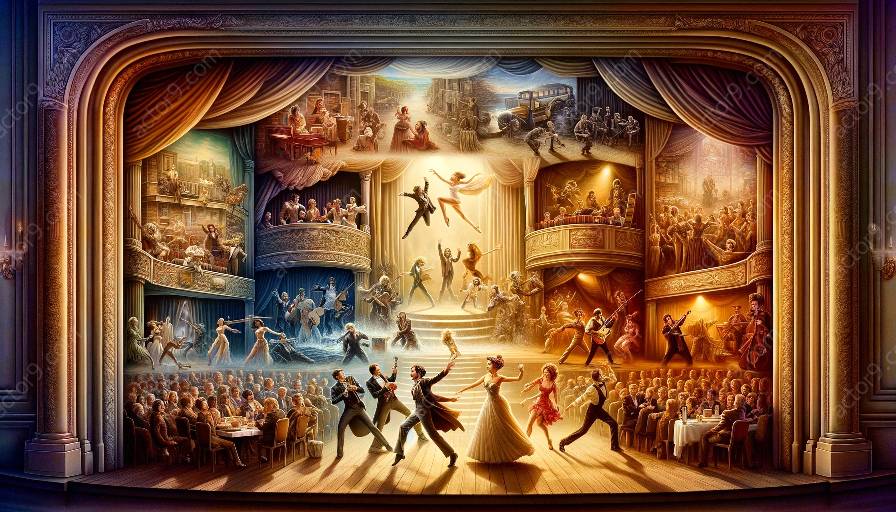When it comes to creating a successful musical theatre production, several key elements play a crucial role in captivating audiences and bringing the story to life. From the music and choreography to the storyline and production design, each component contributes to the overall success of the show. In this topic cluster, we'll explore the essential elements of a successful musical theatre production, as well as the different styles and genres found within the world of musical theatre.
Essential Elements of a Successful Musical Theatre Production
1. Music: The heart of any musical theatre production is its music. Catchy tunes, moving ballads, and powerful anthems can elevate the emotional impact of the story and leave a lasting impression on the audience. The careful selection and arrangement of music are vital to the success of a musical.
2. Storyline: A compelling storyline that engages the audience and evokes emotions is essential for a successful musical theatre production. Whether it's a classic love story, an epic adventure, or a thought-provoking drama, the storyline serves as the foundation upon which the rest of the production is built.
3. Choreography: The art of dance and movement is a fundamental element of musical theatre. Well-choreographed dance numbers and ensemble routines can bring energy and excitement to the stage, adding another layer of entertainment to the production.
4. Cast and Performances: Talented and passionate performers bring the characters to life, infusing the production with depth and authenticity. The chemistry and synergy among the cast members contribute to the overall success of the show.
5. Production Design: Set design, costumes, lighting, and special effects are integral components that contribute to the visual and atmospheric aspects of the production. A thoughtful and impactful production design can transport the audience to different worlds and time periods, enhancing the overall theatrical experience.
Musical Theatre Styles and Genres
Within the realm of musical theatre, a rich tapestry of styles and genres exists, each with its own distinct characteristics and storytelling techniques.
1. Classic Musicals
Classic musicals typically feature a blend of spoken dialogue and musical numbers, often with uplifting and romantic themes. Examples include 'The Sound of Music' and 'My Fair Lady.'
2. Rock Musicals
Rock musicals infuse the energy and rebellious spirit of rock music into the theatrical medium. These productions often explore modern and edgy themes, such as 'Rent' and 'Hair.'
3. Contemporary Musicals
Contemporary musicals reflect the current cultural and social landscape, addressing relevant issues and embracing diverse musical influences. 'Hamilton' and 'Dear Evan Hansen' are notable examples.
4. Revues and Jukebox Musicals
Revue-style musicals and jukebox musicals incorporate a collection of popular songs, often from a specific era or artist, to create a theatrical performance. 'Mamma Mia!' and 'Jersey Boys' are examples of this genre.
5. Experimental and Avant-Garde Musicals
Pushing the boundaries of traditional musical theatre, experimental and avant-garde productions explore unconventional narratives, structures, and themes. These shows challenge audiences and redefine the possibilities of musical storytelling.
Conclusion
A successful musical theatre production is a harmonious fusion of music, storytelling, dance, performance, and visual elements, captivating audiences and leaving a lasting impact. By understanding the essential elements and exploring the diverse styles and genres of musical theatre, we gain a deeper appreciation for the art form and its ability to inspire, entertain, and provoke thought.




































